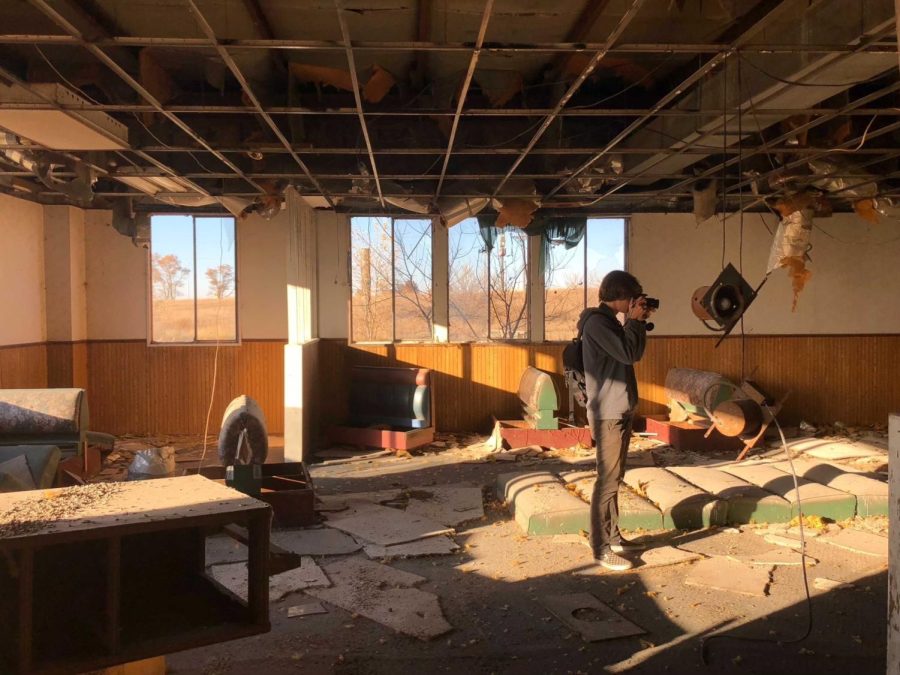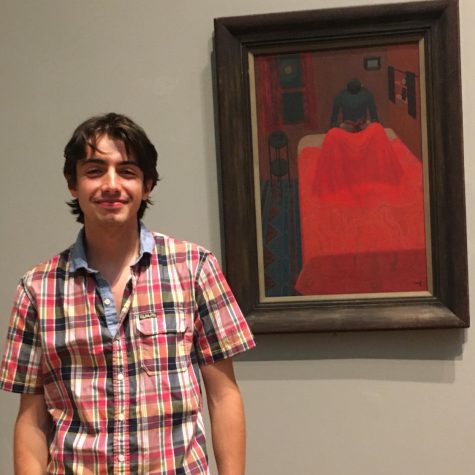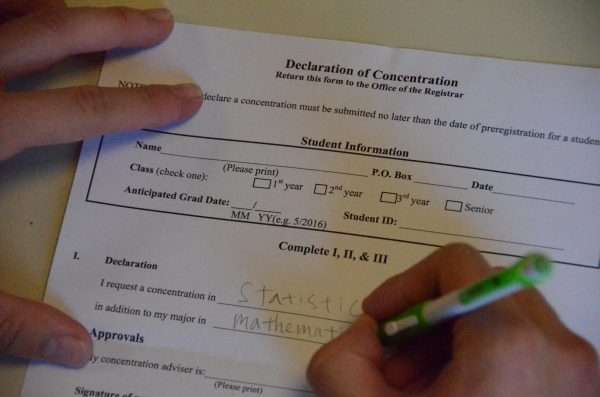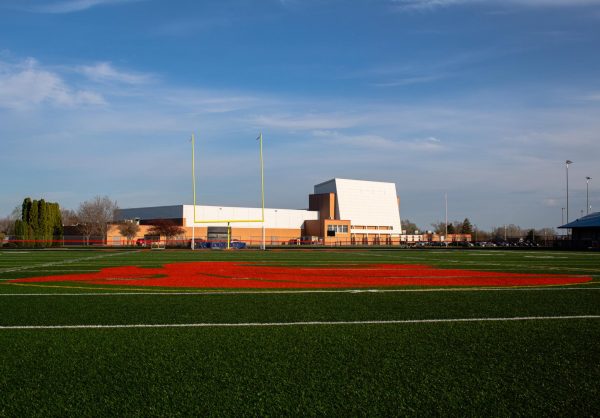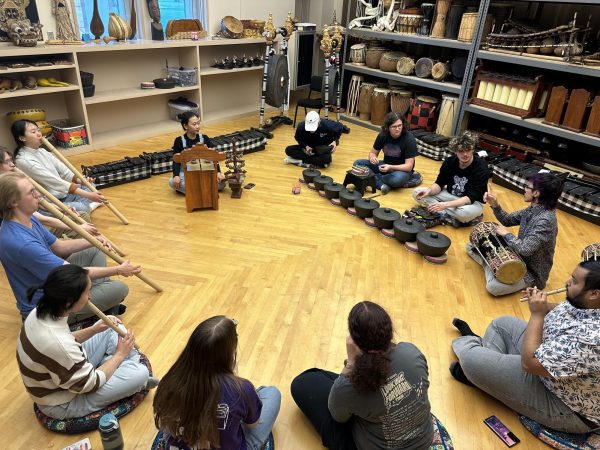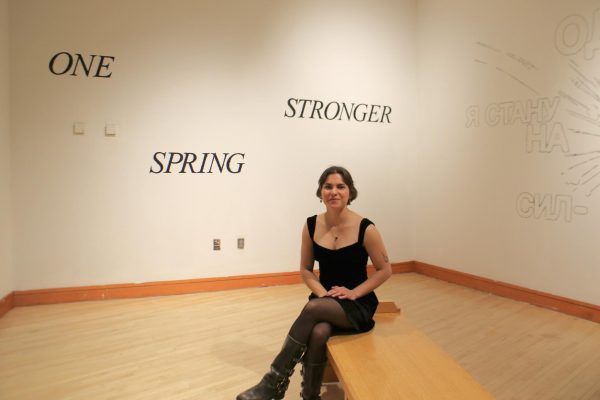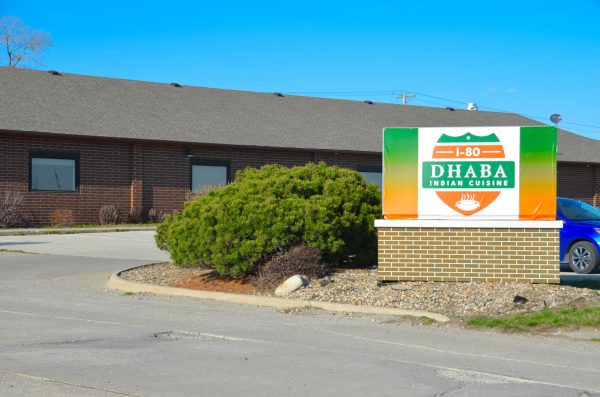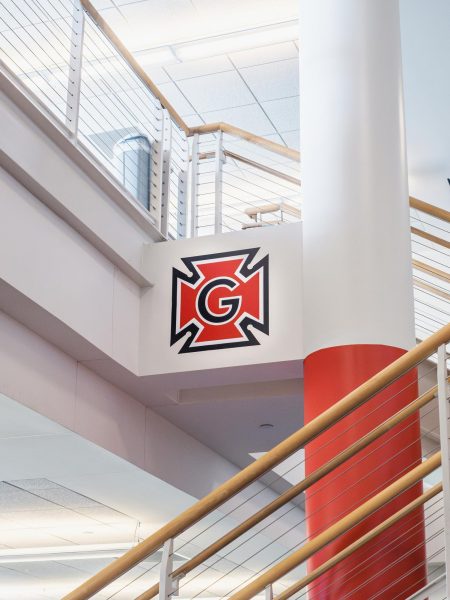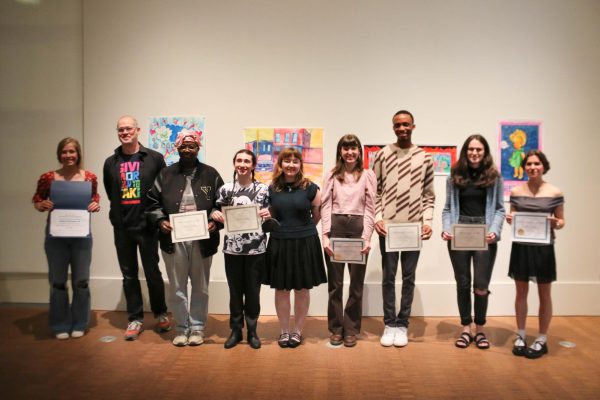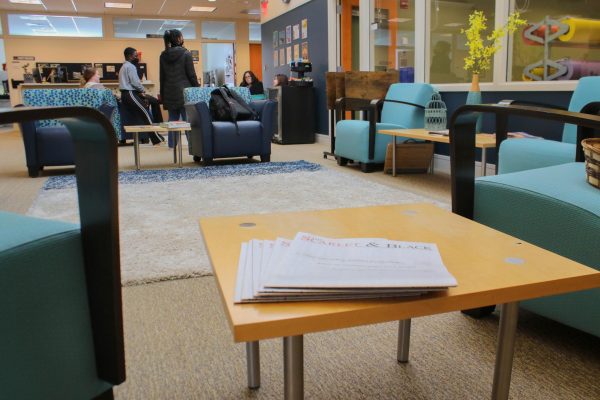Beauty in decay: Grinnell student urban explorer photographs abandoned spaces
Matt Wedzina (pictured above) explores dilapidated spaces, like this old restaurant.
November 7, 2022
After a short drive west on Interstate 80 towards Montezuma, Matt Wedzina `24 and I pulled into the dirt driveway of an abandoned truck stop. A faded plastic sign listed ancient gas prices that seemed too good to be true, clumps of weeds emerged from the crumbling surface of an asphalt parking lot and the afternoon sun gleamed on windows spiderwebbed with cracks. All of this was entirely new to me — Wedzina had agreed to let me join him as he explored so that I could see for myself what his hobby was all about.
Urban exploration is the investigation of manmade structures: primarily ruins, abandoned buildings or hidden spaces. Since they are not in regular use, these places are often relatively accessible. Their deterioration has also become a sought-after aesthetic. Many urban explorers use photography to document the dust and decay which they encounter — Wedzina uses his father’s old digital camera.
Wedzina said that he has been exploring abandoned places for years, and that he first got into it when he was in high school. “I’ve always liked being spooked, and this certainly checks that box. I just think it’s really cool, and it also gives me an opportunity to bring the camera out which I always appreciate.”
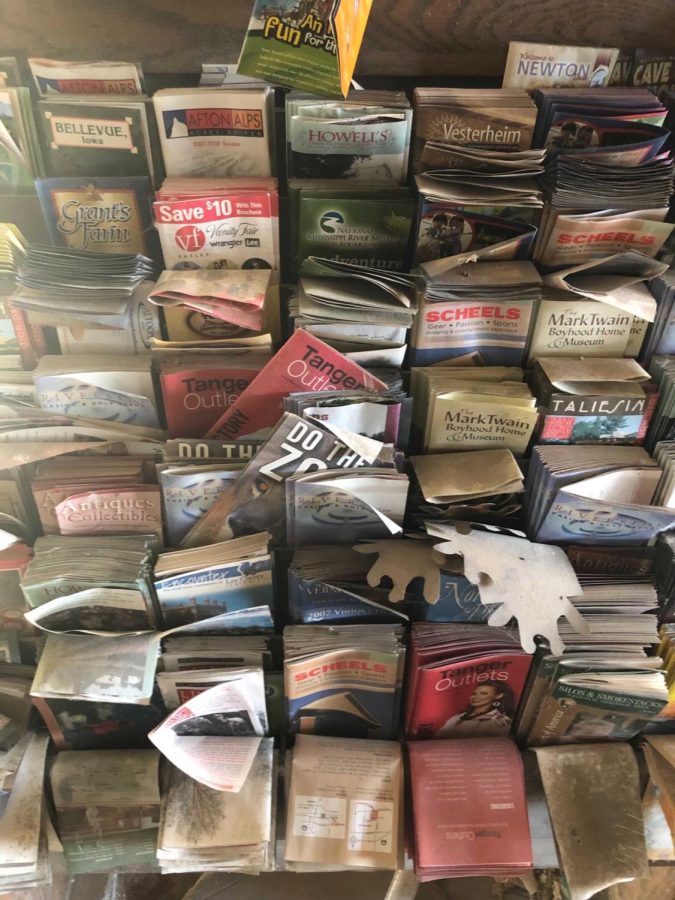
As a quick search on YouTube or Reddit will reveal, there is a vast online urban exploration community. Countless videos document people walking through abandoned malls or factories, often promising jump-scares or paranormal activity. This community has helped Wedzina learn about the hobby and find places to explore.
“Online forums or googling abandoned places near me usually gets some good results,” he said. “I also like to use Google Maps. Sometimes they have the locations come up and it will say ‘permanently closed,’ and then you know it’s abandoned.”
Wedzina did warn that, in many cases, urban exploration is technically illegal, but he seemed keen regardless. “It’s technically trespassing,” he said. “Most ruins or abandoned structures are on private land, still owned by the people who either chose not to or were unable to maintain it.”
Wedzina said he is always sure to make as small an impact as possible on these spaces. “I don’t graffiti or anything like that, I’m just there to document and observe,” he said, before noting that he has never physically broken into an abandoned building (although that is a practice which some urban explorers engage in).
“I have no incriminating evidence on any social media,” he added with a laugh. “I don’t think the police would really care about this, but it’s still better to be safe.”
Besides keeping abreast of the law, urban explorers must also be cognizant of their own personal safety. Abandoned buildings were often abandoned for good reason, some due to contamination from toxic chemicals or materials such as asbestos. It is the responsibility of urban explorers to protect themselves in these situations.
Wedzina highlighted asbestos as one of the most important things to watch out for, especially since some abandoned structures in Grinnell and the surrounding area were built at a time when it was commonly used. “I think it’s definitely something you should keep in the back of your mind,” he said.
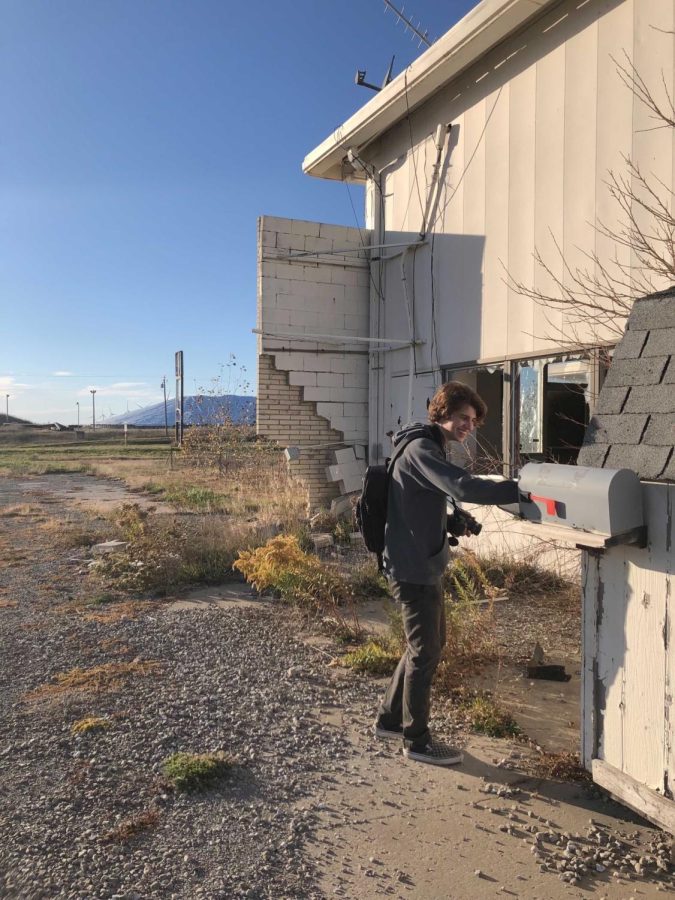
“From looking online, I think a respirator is something people always like to bring no matter where they’re going. You should always wash your clothes afterward in case you came in contact with asbestos or something else harmful.” He said that he plans to purchase a P100 rated respirator and use it whenever he explores in the future.
We had initially planned to explore the truck stop and gas station off of Interstate 80, which Wedzina had already visited, but when we arrived there was a car parked on the property and we thought it would be best not to enter. Instead, we walked across a nearby road to a dilapidated building which appeared to be an abandoned restaurant.
Weeds sprang up haphazardly outside, paint chipped off the walls and the concrete structure looked like it had collapsed in several areas. Inside, a thin film of dust clung to everything. Pipes and wires protruded at odd angles, rubbish was strewn across the floor, travel brochures somehow remained neatly stacked in a case and — possibly confirming Wedzina’s fears about asbestos — insulation spilled out from the ceiling and rested in heaps on the ground.
We quickly agreed to spend only a few minutes in the building. He snapped photographs of graffiti, the ruined kitchen, an old landline telephone and then we emerged from the gloom back into the bright afternoon sun.
As we drove away, Wedzina talked about other places he’d like to explore nearby. He said that he has not been able to find many spots in the town of Grinnell itself, but that there are several places a few hours drive away in Iowa that he would like to visit.
“There are definitely still places in Iowa, just a bit of a drive from Grinnell,” he said. “There’s an abandoned brick factory a couple of hours away and an abandoned greyhound racing track in Waterloo.”
He said that one of his favorite places to explore is not far from Grinnell. “There’s an abandoned school a couple of towns over that’s really great,” he said. “There’s some funny graffiti in there, and it’s honestly beautiful. Plants have started to grow inside, and it’s amazing to see bright green grass sprouting from these concrete ruins.”




























































